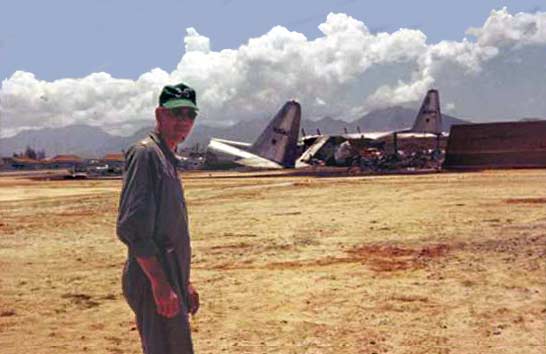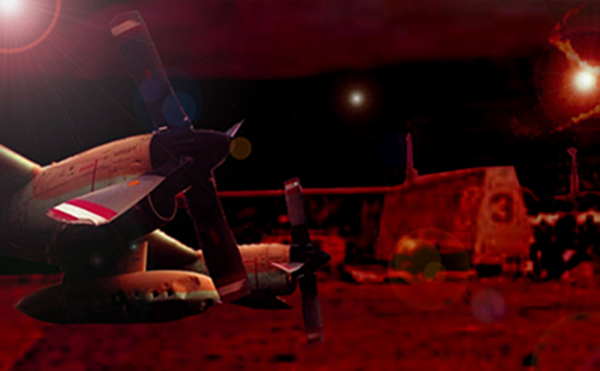
Đà Nàng AB Attack!
July 1, 1965
Mike Bush, (MSgt, USAF Security Police - Retired) :
Many times, off duty troops could not sleep for one reason or another, and would go over to Command Security Control (CSC), check out the ton-and-a-half truck, and run coffee around to the troops on post. Sometimes, the Flight on-duty would assign someone to do this, but usually someone off-duty would just "volunteer." I had performed that duty just two nights before the attack -- Terry “volunteered” that night.
On the fateful night, SSgt Jensen was running coffee. He was armed only with a .38 caliber revolver, and a basic load of ammunition.
Up to that point, we were still state-siding it as far as weapons and ammunition were concerned. In those days, the Air Police were thought of as little more than internal point-security guards for critical resources. We were neither trained, nor equipped to fight an actual ground engagement against a determined enemy. Only a few troops wore steel helmets -- flack jackets were not an issued item. We were authorized only basic load of ammunition for the M16 rifles (three 20 rd. magazines). We were neither issued nor authorized grenades nor M60 machine guns. We carried nothing that wasn't carried at a CONUS base.
Only two posts were located at the south end of the base. One was a checkpoint (not an access control point) located on the west edge of the taxiway across from, and approximately 50 yards North of the first C-130 revetment. The second was a position located at the juncture of the taxiway, and the active runway, near the runway-overrun area.
ACCOUNT OF A2C Tom Winn:
Regardless of what else has been said, I know for a fact that SSgt Jensen was the shift (NCO) supervisor the evening of July 1, 1965 of the area where the VC attack occurred.The C-130s were used as flare aircraft to light up remote posts throughout the northern provinces. They
were not there for any super secret, James Bond type operation. SSgt Jensen was driving a Dodge ton and a half, commonly referred to as a six pack.
At the time, the Air Force's security mission was being run like a SAC base operation in the states, only with relaxed protocol. The Air Police brass were not running the show for jungle warfare, namely, hit-strike-depart as rapidly as possible like the VC did so well.
ACCOUNT OF SSgt Ed Case :
SSgt Jensen drank coffee with us in the AMMO Area, just about an hour before the attack.ACCOUNT OF A2C Tom Winn:
As was customary, the shift supervisor was taking coffee from post to post and was near the end of the taxi-way where alert aircraft were positioned.Mike Bush, (MSgt, USAF Security Police - Retired) :
The "Sapper" attack on the south end of the base occurred as follows:The NVA (guided by local VC) had infiltrated the southeast perimeter through five holes cut in the perimeter fence. After successfully infiltrating the base perimeter undetected, the enemy force grouped behind two large concrete revetments, in which two C-130 flare ships were parked.

There, they waited for the mortars to open up. That would be their signal to begin their attack.
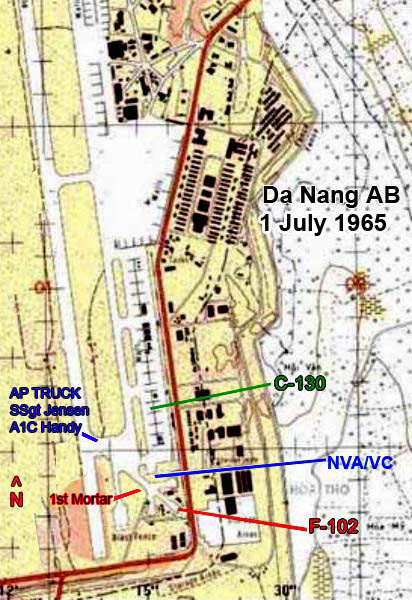
At approximately 0132 hours, 1 July, 1965,
the first incoming mortar rounds hit the base on the
south end of the runway area...
[F-102 Ramp photo below]
... and aircraft parking area, where the alert F-102 interceptor aircraft, and two C-130 flare ships were
parked. At that moment, the first mortar rounds impacted at the end of the runway approximately 200 yards from where SSgt Jensen and Airman Handy were located.
When the mortar fire began, the NVA force advanced in assault under their own fire across the taxiway. As they moved past the revetments, the NVA ripped open the fuel cells in the C-130's with automatic weapons fire, threw grenades into the fuel and fired the aircraft, destroying them.
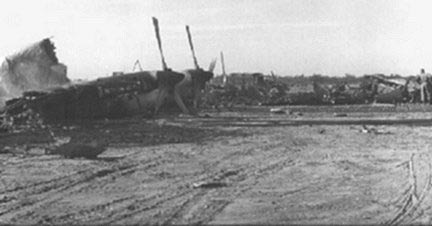
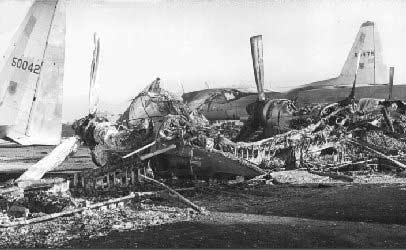
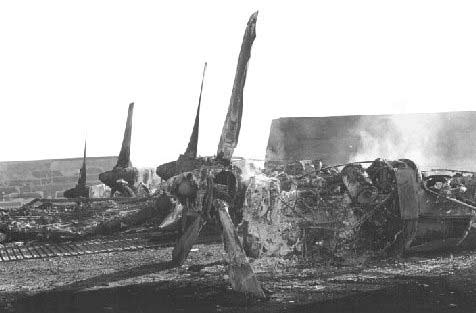
A team of NVA worked their way around behind the alert F-102's, and fired either RPG's or 57mm recoilless rife rounds up the engine exhaust pipes of three of the aircraft, destroying them.
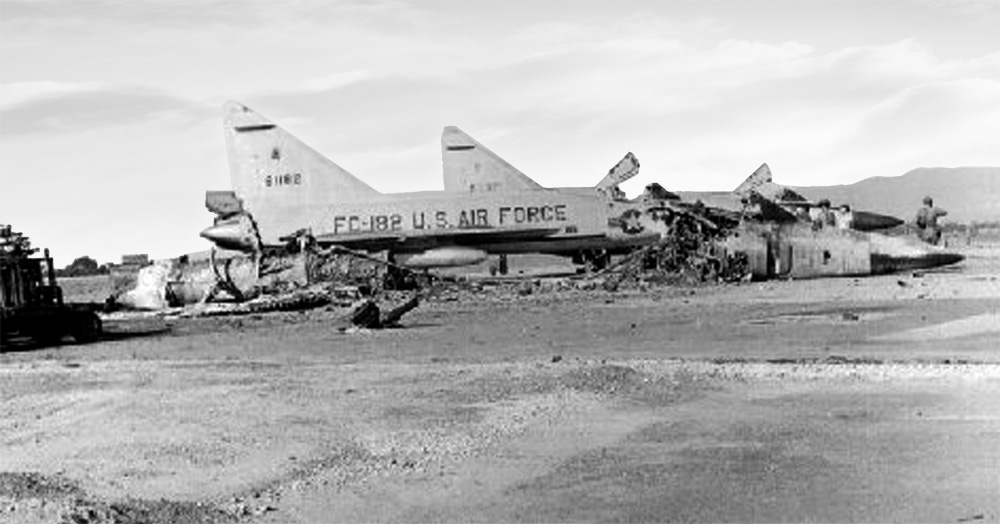
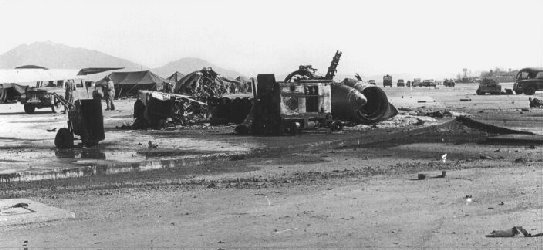
Daylight, 1 July 1965: Captain Dan Daigle, a navigator with the 21st TCS on the morning of 1 July 1965 checks out the rubble and debris, still smoldering. All knew they owed their lives to the Air Police. For the story, check out Flarebirds-Blind Bat, 1965, SSgt Jensen, by Ralph Kendrick (35th TCS).
![]()
Comments to Don Poss, via the Bulletin
Board
(Don Poss, War Stories andVSPA Webmaster)
